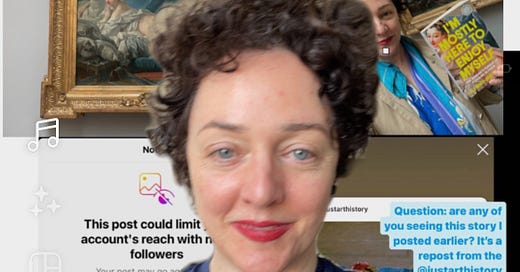The Unknowability of the Female Butt
Our endlessly fascinating, upsetting, and horrifying relationship to the backside
Quick housekeeping. I have some book event dates in the coming weeks with some amazing writers, and I’d love to see you. New York, L.A., Baltimore, New Jersey, Philly, Brooklyn, Rhinebeck…and possibly Toronto. You can find more info and links to rsvp here.
Now, onto the butt. The first time I laid eyes on my book cover I was in Paris, having drinks with…




